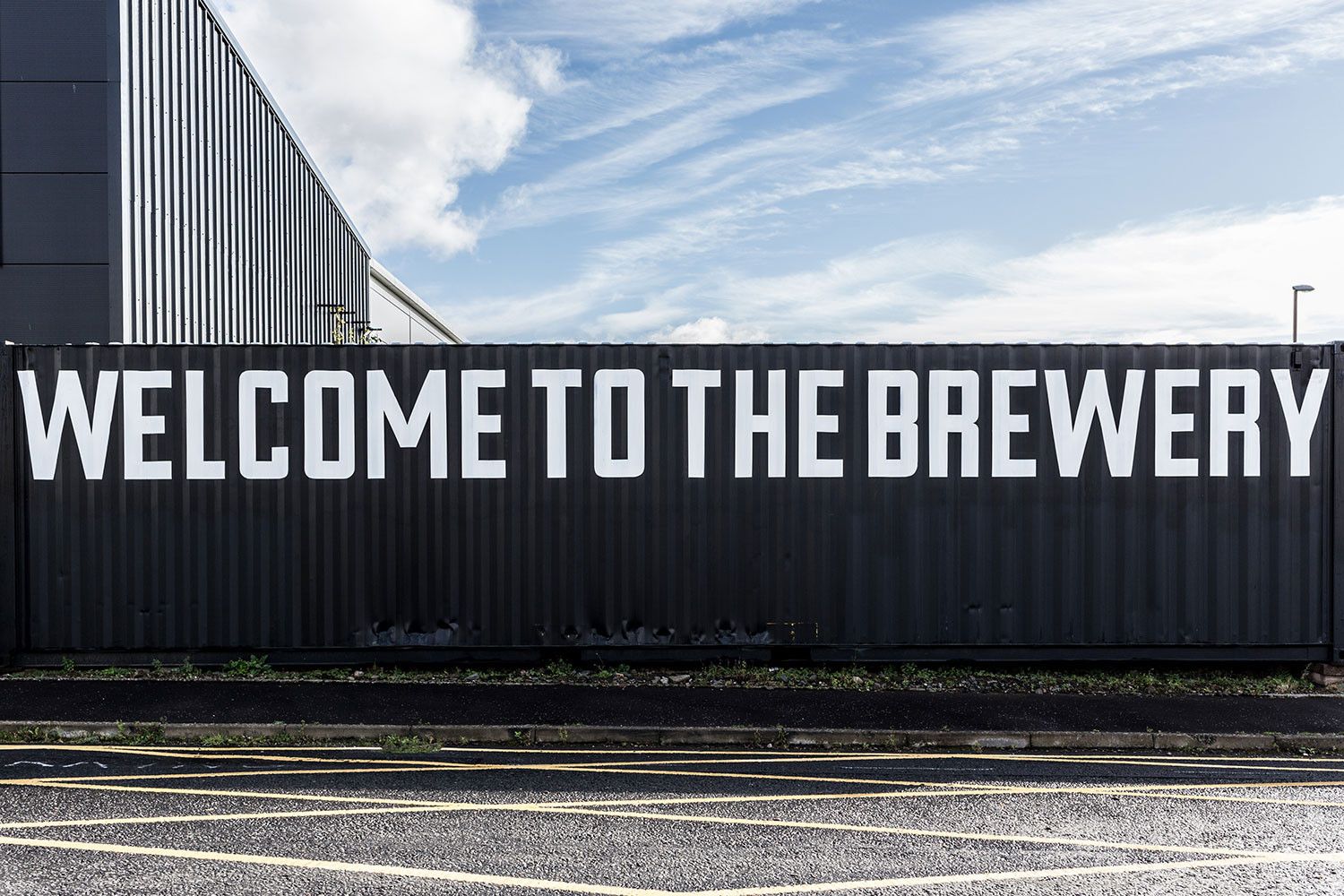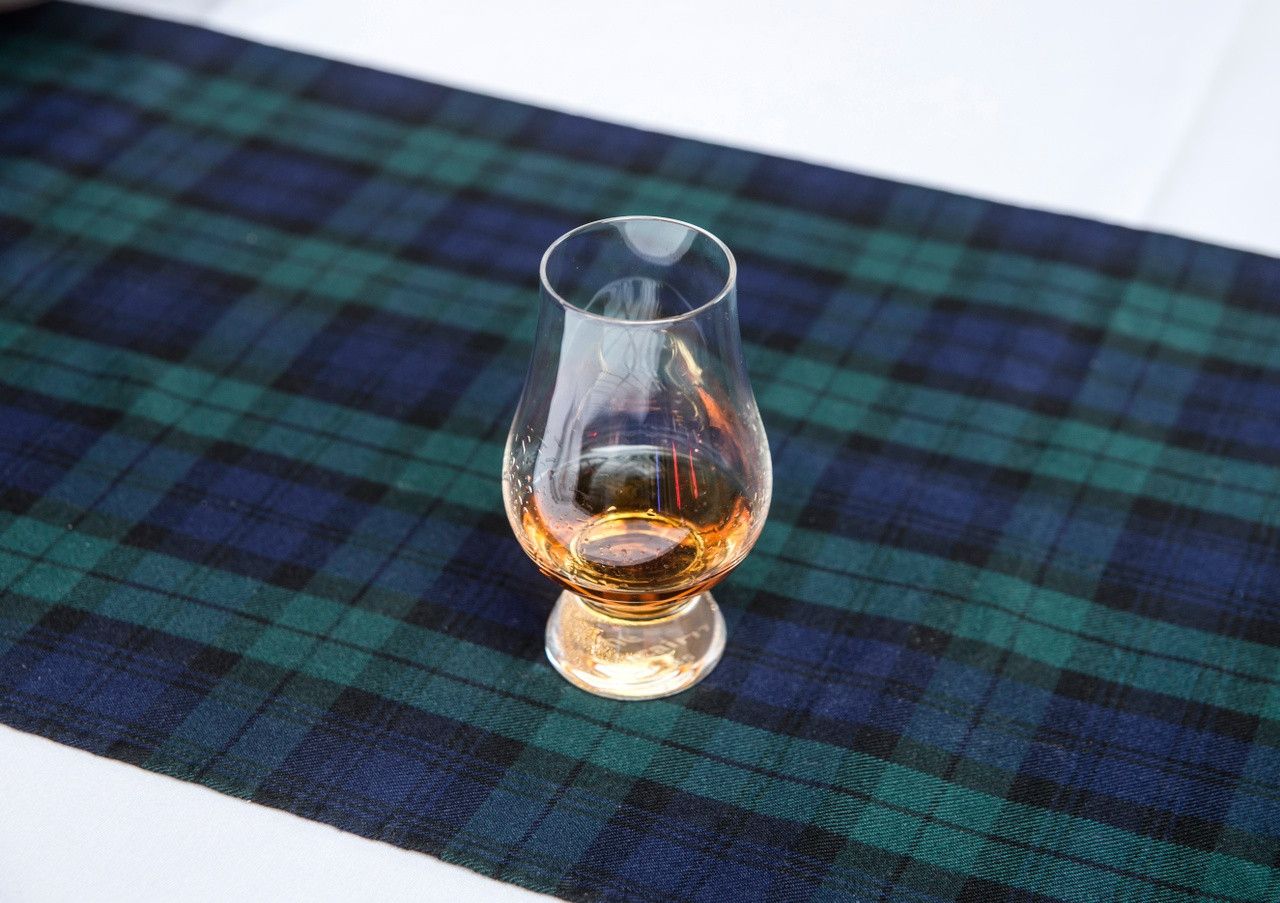At a table across from Vito (for that is the name of our friendly carabinieri) two Scottish tourists are also savouring an outdoor brew of the hoppy variety and they raise their glasses to toast the night but they're drinking the local Peroni lager whilst Vito prefers, to him, the more exotic delights of a glass of good old Tennent's Lager. And is that a wee cheeky whisky chaser the Scottish tourists spy next to Vito's Tennent's?!
Scotland's beers spread the word
It's very apt that Vito, the Italian cop, was supping a frothy glass of Tennent's as it was the Glasgow brewing giants who, along with another illustrious Scottish brewery, Younger's, helped open up in the first instance Britain and then the rest of the world to the pleasures of continental lager.
In the early 1800s a new improved Bavarian style of brewing beer had spread rapidly throughout northern Europe.
Other countries adopted this cold-matured, so-called and in 1842 in the Bohemian town of Pilsen it was to change colour dramatically, from a dark brown ale which was the norm to the golden lager we know today.
It's still a mystery why Josef Kroll, who ran Pilsen's brewery then, made a pale beer rather than a regular dark one. But the beer, which became known as Pilsner, was a big success locally and over the decades the Pilsner style spread to overtake and almost depose the original dark Bavarian lagers.
The lager revolution
However, Britain's brewers remained aloof from the lager revolution until William Younger of Edinburgh became the earliest brewer in Scotland to mash and ferment its first lager beer in 1879.
Younger's innovation was a reaction to the loss of overseas markets for their traditional ales to German and other continental lagers. It was a classic case of: if you can't beat 'em, join 'em.
Younger's stopped brewing lager after a few years unable to compete in quality or price with continental lagers but the revolution had spread to the United States and Australia although a still sceptical Britain was holding out, thinking their own ales were superior to these new fancy German lagers.
Scotland was less narrowly nationalistic about the success of brewing lager in the war for overseas beer sales.

The dawn of Tennent's Lager
The young Hugh Tennent, a member of the family that owned the Wellpark brewery in Glasgow, one of Scotland's biggest and oldest beer exporters, had been sent to Germany and Switzerland in the early 1880s to convalesce after a serious illness.
He returned to Scotland full of enthusiasm for the lager beers he had tried and after taking control of Tennent's brewery Hugh hired a German and a Danish continental brewer to oversee lager beer production at the new Wellpark plant, which was based on a German model.
Lager brewing for export began in Glasgow in 1885, making Tennent's the UK's original lager. It had been involved in the brewing business since 1556.
By 1888 Tennent's was declaring that its lager would 'defy the most delicate palate to detect any difference between it and the best foreign article' and it was cheaper, too.
Younger's (who merged with another old Scottish stalwart McEwan's in 1931) are now part of Scottish & Newcastle, the UK's leading brewer, while Tennent Caledonian continues producing its famous flagship brand, Tennent's Lager.
For Vito, and many others all over the world, it is the long tipple of choice.
So the Europeans sold their fancy lager to us, we remade it as our own and now we're selling it back to them! Isn't that what they call irony?
Auld Reekie
At one time in the 1800s Edinburgh had so many breweries drenching the air with the smell of 'the boil' that it lived up to its name of 'Auld Reekie'.
Now Caledonian is the capital's sole surviving brewery and has been making unique beers since 1987 their main award-winning brand is Deuchar's IPA (3.8%).
The brewery makes nine good cask beers, and operates from Victorian premises using much of their original equipment, including the only direct-fired coppers left in Britain.
The tremendously moreish Deuchar's IPA beer was judged by a panel of 30 international, professional brewers from a list of 150 cask ales to be Champion Beer at the 2005 Brewing Industry International Awards.
And it was also the Official Beer of the Scotland squad at the 2007 Cricket World Cup in the West Indies. Perhaps the locals will ditch their national drink, rum, and acquire a taste for a pint of Deuchar's IPA!
Local heroes
But regional breweries, like Belhaven, continue to flourish despite the domination of Scotland's big three. And their history is just as rich and full of innovation.
By the mid-1980s lager sales had finally captured the majority of the UK beer market, with sales of 50.3 per cent by value. For Belhaven and their ilk this was serious. Like many more traditional brewers it found itself struggling to sell its trademark cask ales in a local and international beer market where lager ruled. But Belhaven had a cunning plan to fight back against the big brewers who were fuelling the thriving lager boom of the 80s.
The canny Scots brewer took its inspiration from Guinness, which had been serving its draught stout using a mixture of nitrogen and carbon dioxide for more than thirty years.
In 1991 Belhaven experimented in serving draught bitter delivered under pressure by a mixture of 70% nitrogen and 30% carbon dioxide this new drink, based on the recipe for Belhaven Heavy, was called Belhaven Best Draught.
It caught on slowly but then exploded into the public consciousness when advertising appeared in 1992. Beer drinkers loved it. Here was a new alternative to the blandness of many lagers and the inconsistent quality of too many cask ales. The industry was impressed and quick to follow Belhaven's revolutionary lead.
Imitation is supposedly the sincerest form of flattery and this proved to be the case with the big national brewers bringing out their own versions of the new beer style that became known as 'smoothflow'. Bass launched Caffreys in 1994, which proved to be hugely successful all over the world. Once again that famous Scottish innovation had come to the fore and Belhaven's ingenuity was copied all over the world.

Wee kids on the block
The obituaries for Scotland's brewing industry have been rolled out in recent years, with the big boys swallowing up countless breweries and closing many more. But contrary to being a dying art, small-scale brewing is flourishing north of the Border.
Scotland is home to more breweries now than at any other time in the past 45 years according to the Campaign for Real Ale, there are now 36 breweries in Scotland.
Tastes are changing. While most consumers want the big lager brands promoted by the big breweries and others, a growing minority are looking for something more individual. In the past few years breweries have opened at Loanhead in Midlothian, Islay and on Skye. Stewart Brewing Ltd began brewing in Loanhead in 2004 and their Edinburgh Number 3 ale is on sale at dozens of pubs across Scotland.
Islay's first brewery for 170 years opened in the village of Bridgend in March 2004. The Cuillin Brewery, Skye's second beer maker, is based at the Sligachan Hotel and has been serving quality ales to local pubs since 2004. Relative veterans Harviestoun, which produced the champion beer of Britain in 2003, moved from Dollar to a brewery five times as big in nearby Alva.
So next time you're in Scotland if you fancy sampling some small beers with a big flavour make sure you head for pubs promising "real" or "cask-conditioned" ales.
The water of life takes over the world
Last but by no means least we come to Scotland's national drink, enjoyed by millions of people worldwide. Koreans take their malt whisky neat, while the Italians add water, ice and even mixers. In France, malt is drunk neat as an aperitif or digestif, while the Japanese have two preferences: on the rocks, and , which means two and a half parts spring water to one pure malt, and ice, and stirred at least ten times.
is very popular at late night karaoke sessions! But however it is drunk, one thing is sure whisky is becoming ever more popular as a global drink. International interest and investment in Scotch whisky is on the rise which is a welcome sign of confidence in the continuing growth of Scotch whisky exports. Scotland's whisky industry exports an incredible 30 bottles a second and competes in 200 markets.
In February 2007 Diageo, the world's biggest drinks company, revealed it was investing 100m, including a new malt whisky distillery in Speyside, to meet growing demand for the spirit in Brazil, Russia, China and Mexico.
A newly minted malt
The new single-malt distillery is the first in Scotland for more than a decade and will create 200 jobs. Diageo's investment, whose single malts include Talisker, Lagavulin and Dalwhinnie, marks a dramatic resurgence for Scotch whisky.
In just 18 months the mood among distillers has changed from cautious optimism to mouth-watering excitement. Exports smashed through the 2.4bn barrier in 2006, catapulting the Scotch whisky industry into being one of the UK's most significant export earners.
As well as Diageo there is widespread speculation that at least one other major distiller is preparing to build a malt distillery in Scotland to meet the surge in demand. It is an unprecedented turnaround. Due to the massive growth of the so-called Bric nations Brazil, Russia, India and China.
Scotch is hip
Another big change has been the emergence of an aspirational middle class. Suddenly Scotch is hip. Stroll into any style bar in New York and the beautiful people will be sipping Scotch. Hollywood stars are regularly spotted enjoying a wee dram on the rocks, often paired with a cigar this image has usurped the traditional one of the Scotch whisky drinker as an old man.
For a long time the industry has been talking about the massive rewards available from exporting whisky to China and India. Until recently it's all been just that, talk. Now, for the first time, there is real evidence that these two tantalising markets are about to fulfil their potential. Whisky exports to China soared by 86 per cent in 2005. Since China joined the World Trade Organisation in 2001, the import tariff on Scotch whisky has fallen from 65 to 10 per cent.
And in just 10 years, growth in China has risen from 700,000 litres to 5.7 million, fuelled by a new generation of aspiring, upwardly mobile young Chinese who have acquired a taste for 'the water of life'.
On the back of the Chinese development, for the first time there is real confidence in the Scotch Whisky Association that India will relax its duties system. Despite extra tariffs 4.4 million litres of Scotch whisky was exported to India in 2005, just 1.3 million cases behind China.
Add to this the 600,000 cases exported to Russia and Turkey and 200,000 to Poland last year and whisky's renaissance is on the rise in more and more new territories all over the world.
So how do the Chinese and Indians take their Scotch? Well, whether they like it neat, on the rocks or with a splash of water, they've certainly taken to it and in a big way!